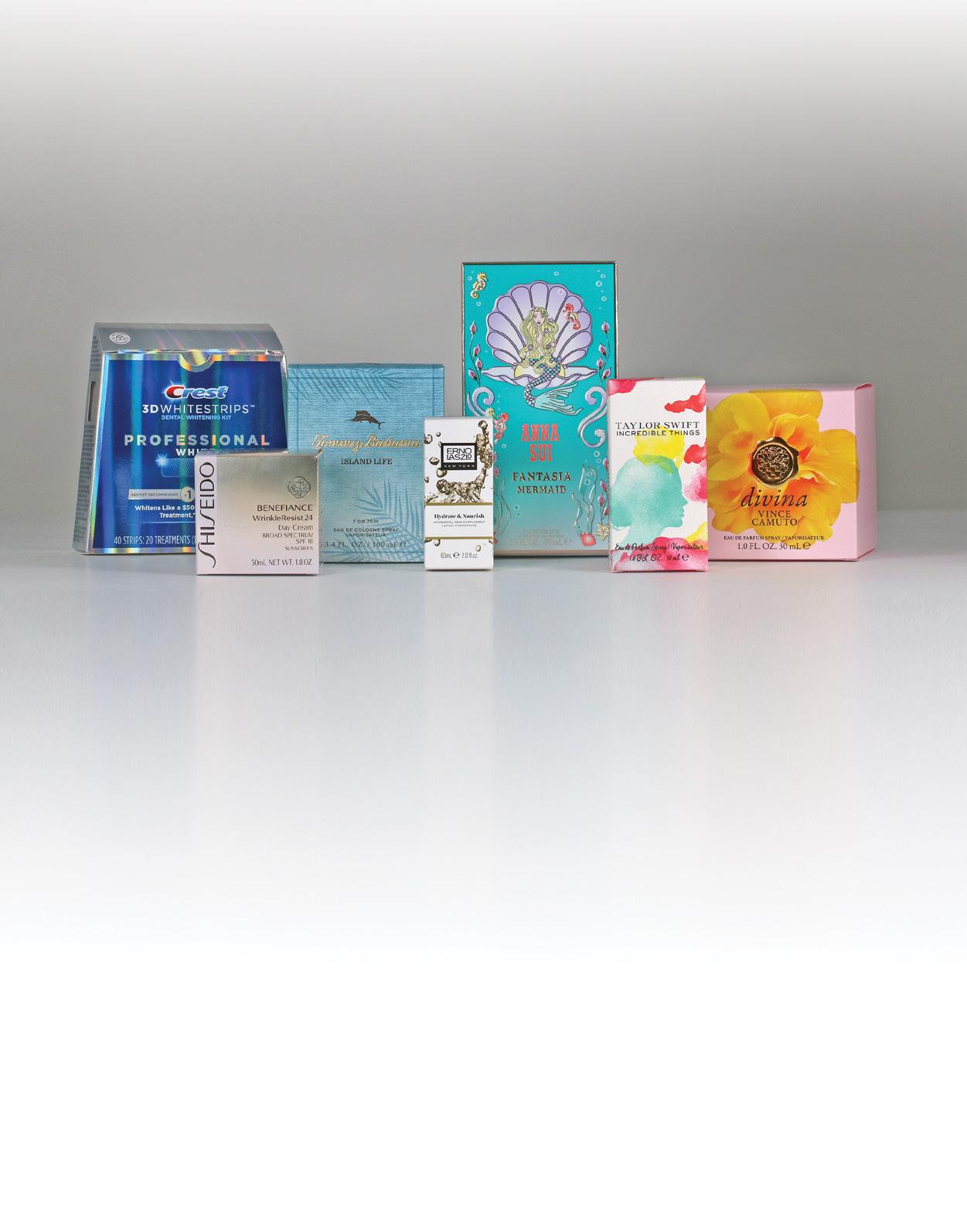
95 minute read
Business Innovations
Future Tripping
Are companies preparing for the psilocybin market too soon?
By Taylor McLamb
CAPS by COOKIES are a wellness blend formulated to aid with sleep or provide energy and immune support. (Right) DoubleBlind magazine covers all aspects of psychedelics, ranging from psilocybin to ayahuasca.

Plant-medicine is currently all the rage. From supplements to extracts to fine powders, plantbased medicine is being hailed as the new trendy superfood. Since the dawn of time, humans have relied on Mother Nature to heal wounds, provide relief, and even get high. That said, it has still taken years of education and research to reduce the negative stigma of more controversial plants, like cannabis. With cannabis now being legalized in some international markets and medical professionals finally starting to recognize it as medicine, people are starting to reexamine other maligned plants as well.
Psilocybin, the main psychedelic ingredient in “magic mushrooms,” is gaining widespread popularity. Breakthrough scientific research around the compound’s therapeutic potential led several cities (Portland, Denver, Oakland) to decriminalize mushrooms containing psilocybin. Researchers at John Hopkins Medicine found that two doses of psilocybin, prescribed with adjutant psychotherapy, showed rapid reductions in depressive symptoms for adults suffering from major depression.
Psychedelic Wellness
These findings are revolutionary. There hasn’t been a medication developed specifically for depression since the creation of SSRIs in the late 1980s, which come with their own hefty list of negative side effects. While psilocybin remains a Schedule I controlled substance, it’s already been placed on the FDA’s fast track for approval and will be legal for prescription in the next decade. While purchasing psychedelics in a retail environment as we do now with cannabis, may be years away, some companies are preparing for the future and envisioning innovative, psychedelic wellness products. Consulting, a nationwide compliance strategy and services provider. She knows firsthand the fast-paced structure of the cannabis industry, which is why Allay launched their psilocybin division. She hopes to provide businesses with insight into emerging regulations once the psilocybin market becomes a reality.
With the psychedelic drugs market expected to reach $6.85 Billion by 2027, according to Data Bridge Market Research, many companies are scrambling to figure out how they can get a piece of the pie. Allay provides businesses with a variety of services, including compliance audits, FDA compliance testing, licensing, ISO certification, and their new Good Agricultural Practices (GAP) certification, which ensures psilocybin is produced and handled safely.
“Our entire goal is to help companies succeed and we think psilocybin is a wonderful molecule. We think it can change the world,”
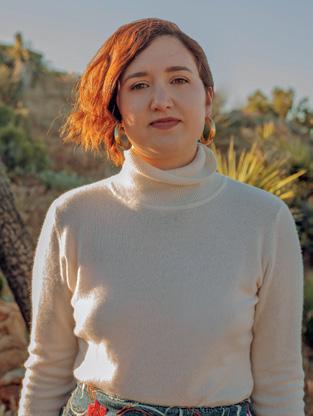

(Left) Editor-In-Chief and Co-Founder of psychedelic magazine DoubleBlind Shelby Hartman. (Bottom Right) CEO and Founder of Blue River Terps Tony Ventura
said Stuck. “It’s just going to be really exciting because plant medicines, in my mind, are the future.”
Marketing Mushrooms
Psilocybin culture is similar to cannabis culture in that both were once deemed illicit but have proven to provide many health benefits. Editor-in-Chief and Co-Founder of psychedelic magazine DoubleBlind Shelby Hartman knows a thing or two about mushrooms. She noted research scientists can only buy cannabis from the University of Mississippi. This limitation makes research cannabis very difficult to access, such that the whole plant hasn’t been able to work its way through the FDA-approval process. Psilocybin, however, is an isolated compound which will be federally legal in a few years, and accessible to those with a diagnosis from a doctor. Consequently, cannabis and psilocybin may have to be two segregated industries, and it will be quite a long time before consumers could find a blended product, such as a CBD, THC, and psilocybin beverage.
Hartman said she doesn’t see an aboveground, recreational psychedelic market happening anytime soon. But, she definitely thinks psychedelic advocates within the cannabis industry plan to start making psilocybin products when there is an opportunity in the future.
Award-winning cannabis lifestyle brand COOKIES is an example of a company doing just this. COOKIES recently released their innovative three-in-one capsule product line, Caps by Cookies, which combines a therapeutic blend of certified organic mushrooms, cannabinoids, and terpenes.
Their products are not psychotropic or psychedelic, instead relying on the natural healing properties of Lion’s Mane, Reishi, and Chaga. The fungus, provided by Jeff Clinton of Nammex, are carefully encapsulated by Tony Verzua of Blue River Terpenes and Extracts to create an energizing blend (Daytime Clarity), and a calming wellness blend (Nighttime Bedhead). They are, however, optimistic about incorporating psychedelics in the future.
“We’re going to ease into the market. Mushrooms are important to us because any kind of alternative medicine is important to us. That’s what we focus on,” COOKIES CEO and Founder Berner told Forbes. “A THC version will follow, and eventually maybe one with psychedelic mushrooms.”
Languishing Legality
Hartman said companies already established in the psychedelic space, creating adaptogenic products like Four Sigmatic’s mushroom elixirs or MUD/WTR alternative coffee, are also looking to make an impact in the market. DoubleBlind has even discussed possibly releasing a white-labeled psilocybin capsule, but Hartman is realistic in noting these products cannot be legally produced for quite some time. to talk about it, but the truth is there is no timeline for something like this happening. I think people are really jumping the gun in terms of creating products if they’re hoping to be able to do it legally,” said Hartman. “It’s going to be five to ten years.”
That said, it’s still enticing to daydream about futuristic psychedelic products. Hartman mentioned talks of a psilocybin nasal spray, an Ayahuasca transdermal patch, and a psilocybin listerine-like strip that dissolves on your tongue. When psilocybin is finally approved by the FDA, there will be a lot of questions from both businesses and consumers. As Tony Verzura, CEO and founder of Blue River Terps notes, “It’s going to take great tenacity and vision to want to incorporate psilocybin into products.” ❖

A Hands-Free Harvest
How Touchless Automation is Streamlining Production and Compliance
By Rachelle Gordon
For cannabis operators, being compliant and efficient at the same time often feels like an impossible feat. This is especially true for cultivators, who must go to great lengths to ensure their cannabis is both high-quality and produced within the constructs of the laws of their individual state.
In 2017, Matt Mayberry, Karen Mayberry, and Benjamin Wong (all passionate cannabis advocates) were exploring a foray into the legal market when they discovered the multitude of issues producers were facing. One of the main challenges was the archaic systems being used for the vast amount of data needing to be collected for regulators.
“We started going to tradeshows to check out the scene and quickly began speaking with growers to determine what challenges they were facing in the current market,” Matt Mayberry (the company’s CEO) explained in an interview with Cannabis & Tech Today.
“One of the most striking discoveries was that growers were managing key parts of their businesses with notebooks, whiteboards, and spreadsheets,” Mayberry continued. “Everything from the team’s work schedule, plant inventory tracking, and crop observations were all being documented manually, and there was no practical way to track what happened from harvest to harvest. We saw that these methods were holding cultivators back. And with the industry poised for explosive growth, the current tools available wouldn’t allow them to scale to meet market demand.”
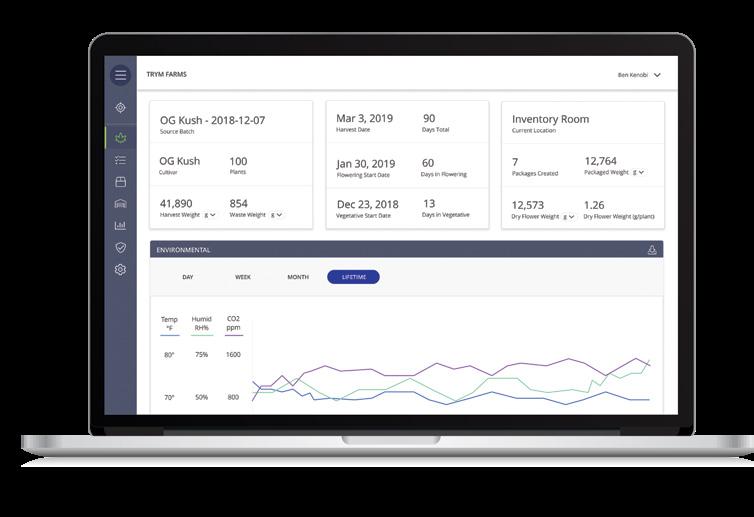
The trio realized there had to be a better way. With Matt’s background in software engineering, Benjamin’s previous work in network and electrical engineering, and Karen’s experience in marketing, combined with the fact that all three founders had experience in cultivation in either home-growing or commercial applications, the team set out to build a technology platform that would help growers thrive in the emerging regulated market.
Trym was officially founded in 2018 and launched its first beta app later that summer. The company provides software solutions designed specifically for cultivators, offering team management, plant tracking, and analytics tools to help producers increase productivity while simultaneously ensuring they remain compliant.
Trym’s Grow app monitors light, humidity, temperature, and CO2 levels while the Explore app integrates task scheduling and workflows.




“Weighing every plant really sucks, but there isn’t a faster way to do it than what Trym has built with Touchless Harvesting,” says Kevin Nelson of Santa Cruz Roots (pictured left).
Trym’s Grow app monitors light, humidity, temperature, and levels while the Explore app integrates task scheduling and workflows. Environmental sensor hardware is also available in order to streamline the company’s software.
Compliance Concerns Lead to ‘A-Ha’ Moment
If you ask Trym’s founders, they’ll tell you the most exciting addition to their technology suite is their revolutionary Touchless Harvest system. The intuitive platform was designed after the team realized the great lengths cultivators took to weigh each individual plant at the time of harvest.
“At Trym, we’re all about helping growers save time and streamline their operations,” Benjamin Wong, COO, said. “When we saw how the growers were harvesting their plants in order to comply with the state regulations, we saw a wide variety of methods being used, all of which caused significant bottlenecks in their harvesting process and ultimately were costing them a lot of time and money. We realized there was a lot of opportunity to improve this process.”
The team at Trym noticed growers were required to either hold or interact with something other than the plants while weighing and recording post-harvest. Everything from a pen and paper, to expensive barcode, or RFID scanners were being used, all of which were slowing down operations.
Additionally, when you’re weighing hundreds or thousands of cannabis plants, your hands are covered in resinous trichomes. Having to click buttons on a device or pull a trigger on a scanner all day means that the equipment being used may quickly become sticky.
“We decided that the most efficient way to harvest would be to remove the need to have to touch anything other than their harvested plants and that’s where the idea for Touchless Harvesting came from,” Wong explained. “We achieved the ‘touchless’ aspect by creating a harvest station that includes a rack, a mounted mobile device such as an iPad, and a scale that connects to the iPad via Bluetooth.”
Touchless Harvesting Already Revolutionizing Cultivation Operations in California and Beyond
For operators in The Golden State, compliance is a seemingly never-ending headache. Trym eases the stress by seamlessly integrating with Metrc (short for Marijuana Enforcement Tracking Reporting & Compliance), California’s seed-to-sale cannabis production data tool. But it’s the touchless harvesting tech that’s getting all the attention.
The cultivators who have already tried the company’s system are impressed with the ease of use and astounding speed.
“We tested Touchless Harvesting back in November of 2020 with our partner, FloraCal Farms, in Santa Rosa, CA, and their team was able to take down, weigh, record, and report 680 plants all before lunch!” Mayberry proclaimed.
“Touchless harvesting is a great convergence of efficiency and compliance,” Andrew Rayl, FloraCal Farms’ Director of Compliance, added. “It allows us to remain in full compliance with even the most conservative interpretations of harvest regulatory requirements without sacrificing any time.”
Kevin Nelson, founder and head cultivator at Santa Cruz Roots, in Santa Cruz, CA, also praised the system.
“Weighing every plant really sucks, but there isn’t a faster way to do it than what Trym has built with Touchless Harvesting.”
“An ecosystem of integrations…”
While efficiency and compliance are indeed the name of the game over at Trym, it’s their dedication to the healing power of the cannabis plant that truly drives their innovation. Their hope is to make life easier for operators while simultaneously improving the overall marketplace for the consumer.
The company is currently working on several projects that will significantly expand its environmental monitoring and analytics capabilities, enabling growers to produce bigger yields and higher quality flower. They’re also adding features specifically tailored to largescale operators in California in order to make managing their compliance across multiple licenses as efficient as possible.
“We see the future of cannabis tech as an ecosystem of integrations,” said Karen Mayberry, co-founder and marketing director. “No one company can build a perfect solution for the entire industry, and 2021 is going to be focused on strengthening our position in the ecosystem and building our network of integration partnerships.
“We want to see the pioneers that built this industry scale their businesses and prosper in the regulated market.” ❖






Speaking Up for Social Justice
By Chynna Pearson
Highlighting the Voices of Those Working Toward Change
What really needs to change to make the cannabis space more equitable for all people? At Cannabis & Tech Today, we’ve been listening to professionals in different facets of the industry: cannabis law, diversity in hiring, and social equity organizations, to understand the problem and discuss solutions. During the Fall Emerge 2020 Virtual Cannabis Conference & Expo, we explored the many areas of the industry in need of change and found many speakers reflected similar sentiments over the issues within the cannabis industry and community.
While cannabis continues to blossom into a multimillion-dollar industry, there are still certain demographics persecuted for cannabisrelated offenses. This persecution is reflected in the industry, as those with prior convictions are often blocked from working in the space or even making purchases. The speakers highlighted below have been campaigning for reform, working to ensure the demographics of the industry are reflective of the communities from which it arose.
Ru Johnson
Johnson is part of Roux Black, a creative consulting firm in downtown Denver that focuses on music and entertainment, politics, booking, and development.
Musicians and cannabis have always been together. Regarding the coming relief album compilations being created meant to help make a change within the community, Johnson explained:
“I mean conversations around social justice uprisings are always taking place at the dance halls or the casbahs or all these places where musicians and artists congregate and come together. I always say that music and cannabis are first cousins.
“The decriminalization of the plant and of the usage of the plant is such a big part of the conversation that we have to still have which of course means the greater conversation of racial injustice that takes place in this country in general. The oppressed part of any of us is the oppressed part of all of us, right? So when you say create a social impact, what does it mean to make real change?”

Mikelina Belaineh
Law graduate Belaineh works for The Last Prisoner Project as the Director of Criminal Justice and is passionate about their work.
When asked about the issue of re-entry after incarceration due to cannabis-related offenses:
“Re-entry, in and of itself, it’s meant to be a losing battle. It has all these collateral consequences and barriers we are fighting to try to overcome. What [The Last Prisoner Project is] doing is trying to focus on the employment research across the board, whether it is data qualitative, anecdotal, my own experience, like working in reentry services on the ground, is that employment is key and critical to successful reentry.”
Their work with The Last Prisoner Project also deals with social equity. On the topic of such and the blatant gap in the diversity of the community, Belaineh explained:
“The fact that cannabis is literally creating generational wealth for white America and it is continuing to create generational harm and trauma to Black and brown communities. These two things are existing in what we would like to be a just society, but it can’t be a just society if those two things still exist. There’s a moral imperative piece to this employment thing where if you’re in the industry, and you’re making a profit it just makes sense to bring the folks into the fold who have been incarcerated and traumatized for doing the exact same thing.”

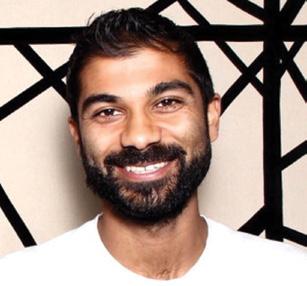
Hirsh Jain
Jain is the Director of Government Affairs at Caliva, a vertically-integrated cannabis company based in California. While he is a lawyer, his primary role in the company is to ensure adherence to new laws and regulations.
When faced with the question of whether there is sufficient diverse representation among lawyers who work in the cannabis industry, Jain says:
“The impact of cannabis arrests is felt by certain communities. I don’t know if I would say it’s sufficient but in my anecdotal experience lawyers representing the cannabis industry are more diverse than the industry itself. I think many of us are familiar with the tremendous amount of work that has to be done when it comes to diversifying the industry. I think, obviously, in part that it is a function of historical criminal justice policies, a function of the fact that it costs millions of dollars to start a cannabis business, and there is a huge wealth gap in this country.”
Malia Anderson
Anderson is the founder of Ladylike 420, an influencer collective that educates and entertains people with a focus on changing the perception of who cannabis users are and why they use cannabis.
On why she got into cannabis and cannabis advocacy, Anderson explained some common hardships she experienced first-hand:
“When my dad had liver cancer and I had a medical condition that came on urgently, cannabis was absolutely a part of our medical care. I started researching and got into the advocacy side of social equity because my dad has been in the cannabis industry, or I’m sorry, my dad’s been the “weed man” for almost 50 years. He spent almost 25 years on parole or probation for cannabis-related crime and he had no legal way into legal cannabis. There is no way for him to be a part of it.”
Anderson’s father’s story is not an uncommon one. The cannabis industry is not accessible to those who have had prior offenses relating to cannabis.


Tae Darnell
Darnell has been making an impact for most of this life. He is currently working as a lawyer.
On why the cannabis industry’s demographics are so skewed and what laws have to do with it, Darnell explained:
“When you look at the statistics underneath [drug arrests], although the population representation is 13% African American, 26% of the arrests were of African Americans so I think we’re seeing socially how the war on drugs and its fallacy had on an impact on society.”
When asked about how and why to spread awareness, Darnell says:
“I really saw an opportunity to use media as a vehicle to bring people together, to use media as a vehicle to unite an industry like cannabis and things that spread across the social spectrum. To me, the biggest and first point of emphasis needs to be its impact on the criminal industrial complex. It is a for-profit mechanism.” ❖
A Deeper Look at the Connections Fueling the State’s Cannabis Industry
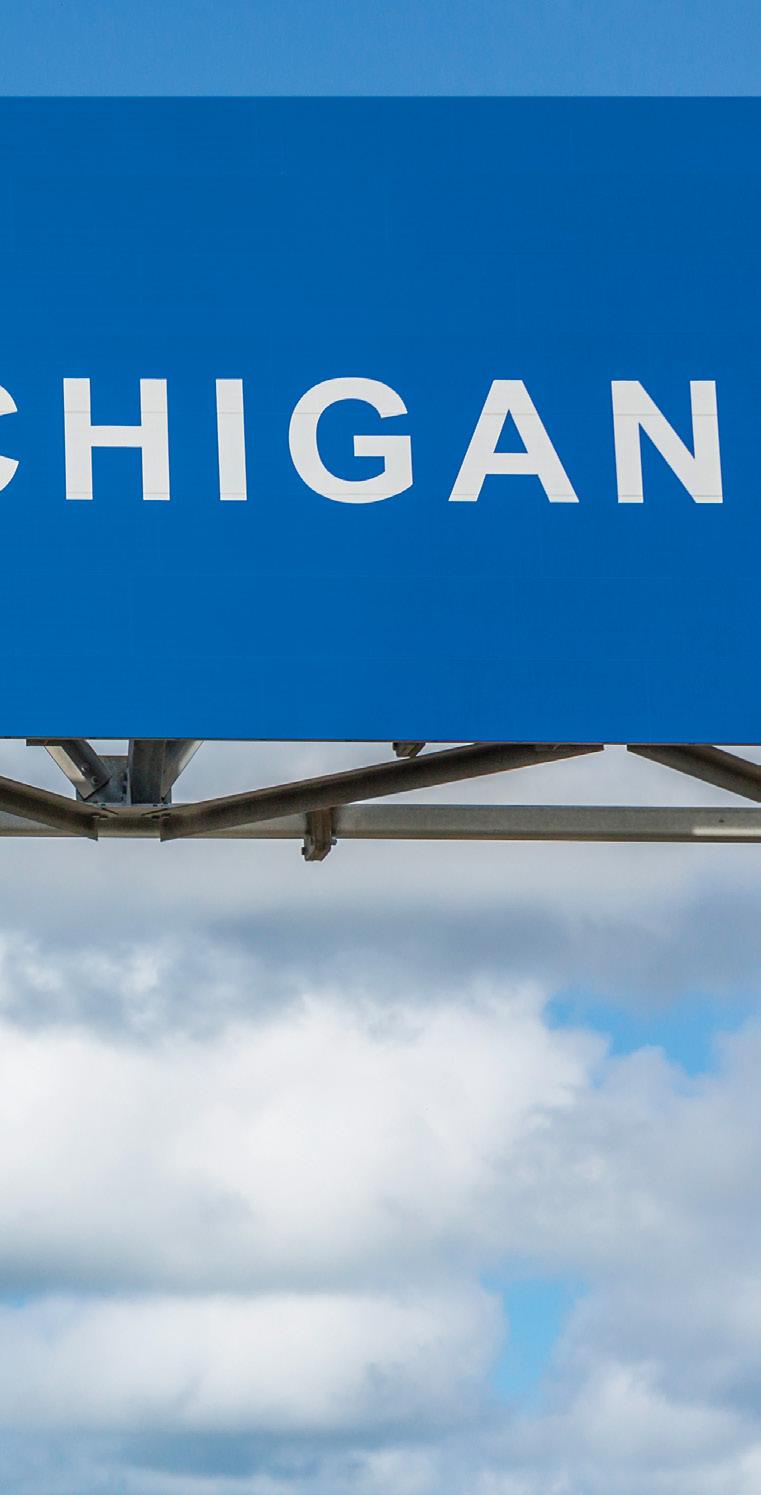
By Patricia Miller
Abundant apple blossoms, plentiful herds of white-tailed deer, and over 3,000 miles of freshwater shoreline are just a few of Michigan’s notable attractions. The Great Lakes State is also the second-most agriculturally diverse state in the nation. Thanks to the 2018 Michigan Taxation and Regulation of Marihuana Act (sic), cannabis is now a growing part of their agricultural abundance.
With more than 40% of the state covered in water, it’s a wonder Michiganders (Michiganians?) are able to produce so many agricultural commodities. Michigan exports more than 300 commodities commercially, second in diversity only to California. With 10 million acres of farmland, the production of hemp and cannabis is already expanding the state’s impressive agricultural offerings.
The legalization of recreational cannabis sales is predicted to have some exciting effects on the state’s economy. Michigan State University (MSU) conducted a study in March of 2020 noting retail sales will have an estimated economic impact in excess of $7.8 billion within the first 4-5 years of production.
Part of that impact will come from increased employment. Agriculture employs a large portion of the state’s workforce, responsible for 17% of total jobs, according to Michigan’s state website. That percentage is expected to grow with hemp and cannabis production added to the mix. MSU’s study estimated more than 7,000 people will join the Michigan ag sector to work with marijuana.
That number doesn’t include the nearly 10,000 who will join the retail and wholesale trade sectors as a result of full cannabis legalization. All of these jobs should add nearly $1.8 billion to the total annual gross state product.
It’s an exciting time to live in Michigan. In this Tech Zone, we’ll explore some of the companies working to provide the services and solutions necessary for the cannabis and hemp industries to grow and thrive. Whether it’s climate solutions, financial services, or compliance consulting, the following pages will dive into the ins and outs of Michigan’s emerging marijuana landscape. ❖
Cultivating a Climate of Excellence
Growing Pains and Building a Business in Michigan’s Tech Zone
By Ed Rogers
Over the past 20 months, Kevin O’Connor has had his fair share of ups and downs. Launching his family-owned cultivation facility, Narvona, in a nascent market like Michigan wasn’t easy, especially during a pandemic.
“Working with the state and local municipalities has been a challenge, just trying to ensure we’re all on the same page since [cannabis cultivation] is still fresh and new here in Michigan.” But, O’Connor says just getting the doors open was the hardest part.
Designing a 35,000 square foot facility with more than 6,000 plants took careful planning. One of the most vital aspects of any grow is the HVAC system. O’Connor enlisted the help of indoor climate specialist Surna during the blueprint stages of construction.
From the Ground Up
“Surna helped us engineer and design how our chiller loops work in the grow rooms themselves. They’ve been more than willing to jump on the phone and help me answer any problems we’ve faced since the beginning,” O’Connor shared. Indoor cannabis cultivation is unique in that facilities must account for high heat loads, mold protection, and even special electrical requirements.
Traditional HVAC technicians often don’t have the experience or expertise to provide the precision temperature control necessary to grow consistently high-quality crops. That was one of O’Connor’s major considerations when choosing Surna. They’ve been operating in the
cannabis space for 14 years, refining their designs and equipment to create custom solutions for the industry.
Paying for Precision
O’Connor advises those looking for temperature control solutions to do their due diligence.
“Don’t base your decisions off of a dollar amount, go based off of your requirements and what you’re trying to produce,” he said. “If you’re okay having limited control over the temperatures and humidity, then that’s fine. But if you want to have precision, it’s definitely necessary to bite the bullet and pay for it. Explore any and all options that can help you narrow in on that exact temperature and environment you’re looking for.”
Narvona’s pesticide- and chemical-free luxury cannabis is available for both recreational and medical suppliers, so he wanted to find a company that could address biosecurity. Surna uses air sanitation methods like photocatalytic oxidation, ionization, and HEPA filtration to prevent airborne fungal diseases from spreading. From Start to Finish
Over the past year, Narvona has scaled from zero plants to 6,000. There have been hiccups along the way and hurdles to overcome. O’Connor said the most important aspect of a partnership isn’t the problems, but how you’re able to work through those issues.
“Surna has answered the phone calls and wanted to work toward a solution. They realize that not only is it best for the customer, it’s also best for Surna to have that good start to finish relationship.”
With four Class C licenses in Michigan, O’Connor is faced with dozens of problems each day. Fortunately, when there’s a climate control issue, he’s found a reliable partner to call on. ❖
Narvona is a family-owned Michigan cultivation facility specializing in high-quality flower for adult-use and medical markets.




Overcoming the Cash Problem
Michigan’s incredible growth is creating a cash surplus for weary retailers.
By Ebby Stone
In December 2018, Michigan became the 10th state in the U.S. to legalize cannabis for recreational use. From January to August of 2020, recreational sales climbed to $65.5 million. As with many recently-legalized states, Michigan’s recreational market is expanding at a break-neck pace. Where Michigan differs is in its average basket size.
Customers in Michigan spend more than $84 per transaction, the largest average for any state according to a 2020 study from Headset. This is great news for retailers, but with so much money coming in, how are business owners keeping track of all that cash? Cannabis is still largely a cash-only enterprise, with an estimated 70% of legal cannabis businesses operating without a bank according to New Frontier Data.
Cashless Solutions
That doesn’t mean regulators aren’t tracking those dollars. Each cent is accounted for and that leaves an onerous burden on retailers. Cashless payments are one method providing some relief to cash-weary store owners.
Dean Scanlon, regional account manager for GreenHouse Payment Solutions, was born and raised in Michigan and understands the complex retail environment. While acknowledging the difficulties with cannabis banking, he believes cashless payment is the most effective way to ensure state compliance and accurate reporting.
“Cashless payment makes it safer for the budtenders, easier on the owner to track transactions in real-time, and provides the accounting department the reporting needed to reconcile sales,” said Scanlon.
Compliance and Oversight
Michigan is one of few states in the U.S. to house all their cannabis-related regulations within one governmental body. The Bureau of Marijuana Regulation (BMR) oversees both medical and recreational cannabis licensing and regulation.
Department of Licensing and Regulatory Affairs Director Shelly Edgerton noted, “While many other states have various licensing, regulation, and patient programs spread throughout different departments and agencies, BMR will keep marijuana-related services in one place in order to best enhance consumer protections and make regulations more efficient for business customers.”
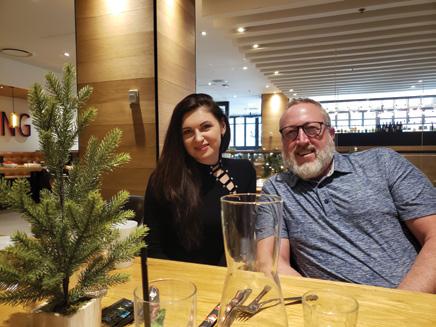
While this makes compliance easier, dealing with piles of cash can complicate reporting.
Each sale is recorded through METRC, the state’s tracking system. Every penny tracked has to match up to daily totals. For Michiganders looking to avoid scrutiny and streamline accounting, accepting debit cards and other forms of cashless payment are an ideal solution.
“It is so much easier than counting cash at the end of the day,” Scanlon said. Paper or Plastic?
Compliance and reporting aren’t the only reasons to offer cashless options.
According to Scanlon, offering customers an option to pay with their debit card can have a significant impact on how much they’re willing to spend.
In fact, according to a U.S. Consumer Payment Study conducted by TSYS in 2018, people will spend up to 83% more when using a card versus paying cash.
Though the recreational market is still in the early stages for Michigan, it’s important entrepreneurs set themselves up for success for the years ahead. Instituting cashless payment options is one innovative way to meet the needs of a growing demographic.
“As our industry evolves, we are evolving with it,” Scanlon said. It’s a phrase every cannabis entrepreneur will have to abide by if they’re to thrive in this emergent and quickly changing sector. ❖

Silvia Cernenchii & Dean Scanlon
The Greenhouse Payment Solutions team at an industry conference prior to the pandemic.






Our highly energy-efficient cooling and humidity systems are custom engineered for the cannabis industry. We offer the following services to help you achieve better results:
◆ Precision air conditioning & dehumidification ◆ Cogeneration systems ◆ Custom air handlers ◆ Facility automation controls ◆ Odor abatement systems ◆ Sealed climate greenhouses ◆ Chilled water systems ◆ Project management & engineering ◆ Super insulation products available ◆ Energy savings up to 30% ◆ Modulating compressor technology
Optimization Through Automation
How Connected, Smart Technology is Creating Profits for Cultivators
By Patricia Miller
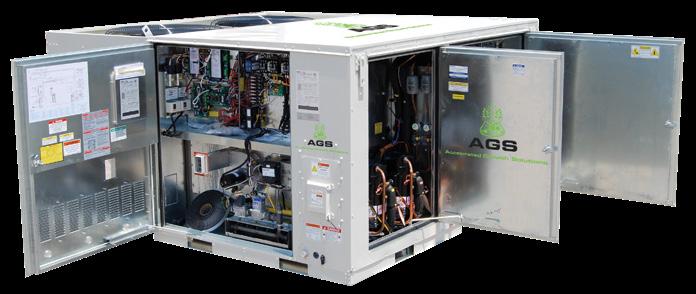
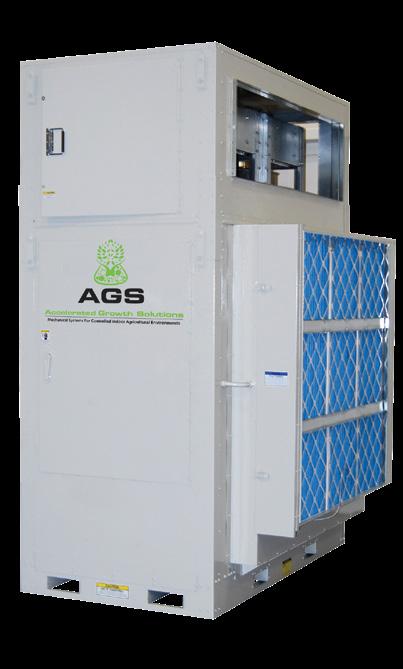
Would you be surprised to learn 45% of current paid activities can be automated by today’s technology? That’s according to research from McKinsey Quarterly conducted nearly six years ago. The percentages are even higher now, with advances in automation happening at an exponential rate. For areas like Michigan, there’s a unique opportunity to design facilities with cannabis in mind, rather than retrofitting a space designed for a different industry. For growers looking to compete, automated solutions can be the dividing line separating profit from loss.
One area that’s embracing automation is climate control. For large-scale indoor agriculture, precision temperature control is crucial. It’s the difference between growing a crop in a tropical climate versus an arctic or desert climate — temperature and humidity matter. So, why are so many growers using technology scavenged from other industries?
Conor Guckian, founder of Accelerated Growth Solutions (AGS), speaks with dozens of growers each week and understands the struggle. “The commercial marketplace is in its infancy with most growers adapting their knowledge from small scale and residential operations. To maintain indoor conditions in those small operations, standard air conditioners and small portable dehumidifiers were used. When trying to control considerably larger commercial operations using separately controlled standard air conditioners and dehumidifiers, growers often face a litany of problems.”
In Michigan, for example, growers have to consider outdoor ambient air temperature when choosing their climate system. Guckian noted that most air conditioners cannot function when outside temperatures fall below 45 degrees Fahrenheit. This is the kind of knowledge that comes with experience and is why professional consultation can ultimately save time and money. It’s just one minor consideration in an entire ecosystem of variables to consider when creating quality cannabis.
Some systems are able to account for many of a grow’s major concerns automatically. Guckian was quick to share that AGS can automate temperature, humidity, lighting, CO2 dispersion, and integrate CO2 safety sensors for indoor facilities. Another advantage of automation is the ability to set parameters for operation.
For instance, consider the issue of dew points. They reflect the true operational conditions growers require. Vapor pressures in the air are the main driving factors for the growth of plants. These vapor pressures are not dependent on air temperatures and can be difficult to control. AGS’ automated solutions calculate the desired dew points based on temperature and humidity setpoints and then control indoor environments based on those values. Guckian noted, “Operation based on dew points is one of the main advantages of our systems, providing stability and efficiency. This is especially important when conditions are changed from photosynthesis periods to dark periods and vice versa.”
Whether designing from the ground up or modifying an existing facility, automation should be a priority. Lower labor costs, higher operational efficiency, and the ability to replicate environmental conditions for each grow will ultimately define the quality of the product produced and the longevity of the cultivator’s operation. ❖

Tried and
3 Things to Know When Partnering Tested: With Michigan’s hemp sector ramping up, understanding the with a Hemp Inspection Lab inspection process is more important than ever.
By Monica Stockbridge

The Adams Independent Testing team saw a need for unbiased third-party testing laboratories in the hemp space and launched their family-owned business in 2019.
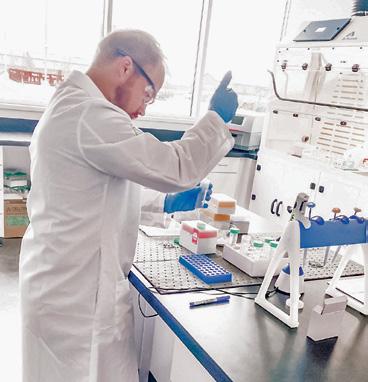
After spending their early careers in a thirdgeneration, family-owned testing laboratory for commodity grains, Kia Adams-Mikesh and Mark Adams, along with their father and grandfather, Mike and Steve Adams, turned their attention toward hemp. They realized there was a need for unbiased third-party testing laboratories and decided to bring their expertise to the budding hemp industry.
The brother-sister team launched Adams Independent Testing (AIT) in 2019 with a focus on providing Certificates of Analysis (COAs) to buyers and sellers of hemp, testing for potency, pesticides, heavy metals, mycotoxins, terpenes, microbials, and more.
Especially in the hemp industry, quick turnaround times and attention to customer service are essential. Existing wait times for results were often between one and four weeks — unacceptable for formulators, processors, and farmers who cannot afford to let biomass languish in a barn or warehouse, waiting for their COA.
When preparing for your hemp inspection, here are three things to look for:
Understand your state’s regulations.
Buyers and sellers of any commodity often choose to pursue certificates to prove their product is free from contaminants such as pesticides, heavy metals or mold. The USDA has laid the foundation for hemp regulation, such as making sure the THC level is below 0.3%. Still, variances are common when it comes to state regulations. Some states only have regulations for finished products, while others only regulate smokable hemp. Other states have no regulations at all. In such a new industry, the rules are always changing. Choosing to test for as many contaminants as possible helps ensure the highest quality product from start to finish.
Sample your product correctly.
While there are standard regulations for grain sampling, hemp sampling best practices lag behind. One common example has to do with biomass stored in large plastic totes. Many people will simply scoop biomass from the top of one tote, which does not give a representative sample. Instead, use a probe or other sampling apparatus to get all the way to the bottom of the tote, then the middle, and finally the top. The other key is to sample from multiple totes, which might represent different fields or strains. This “bottom, middle, top” method works for extracts, too.
Know how to read your COA.
It’s one thing to receive a COA and another thing to decipher it. There’s no governing standard for consistency among testing results, and different labs handle and represent data differently.
Hemp buyers and sellers must look at the “limits of quantification,” which refers to how closely laboratories test for particular analytes, such as THC. One lab may set 0.01% as the limit of quantification, while another may use 1% for the same analyte. The second lab wouldn’t detect a reading for anything under 1%, even if the THC measured above the USDA’s limit of 0.3%. The test isn’t technically fraudulent, but it’s a red flag. Cannabis labs, for example, likely don’t usually set limits of quantification as low as 0.3%. In this type of situation, partnering with an unbiased thirdparty lab offers an important advantage. ❖ Learn more at https://hempinspection.com or follow on Instagram at @hempinspection.
There’s a Bond for That
Protection, Compliance, and Surety in Michigan’s Cannabis Industry
By Ed Rogers
Constantin Poindexter
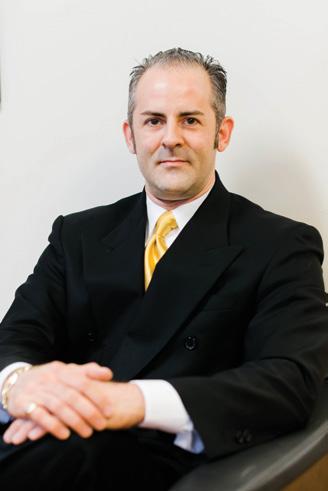
iStockphoto.com/Michail_Petrov-96

State governments are worried about cannabis companies. Will they follow regulations? Are they abiding state laws — and if not, how can the state regain losses from fees or fines caused by the company’s failures?
This is where surety bonds come in. Most states require cannabis companies to carry a surety bond to secure their operating license. It acts as a contract between three parties: the business owner, the bond provider, and the state.
What is a Surety Bond?
A surety bond agreement is a financial guarantee that the company will follow regulations. If the company makes a mistake that costs the state money, the state can make a claim to the bond provider. Once the money is paid, the business owner must repay the bond provider.
This all seems straightforward, except this is cannabis — where nothing is as easy as it seems. Cannabis is federally illegal. So despite the state’s requirement to carry a bond, most financial services don’t work with cannabis operators for fear of federal penalties. Find a Carrier
Surety One President and Chief Underwriter Constantin Poindexter explains, “There has been enough controversy surrounding legal cannabis that offering insurance vehicles has been severely limited. One of the first surety companies to enter the space was hit with a lawsuit alleging, among other things, that the surety conspired with other parties to violate a federal statute.”
This lawsuit set a negative precedent for the rest of the industry.
“One of the world’s largest reinsurance facilities immediately announced its complete withdrawal from anything cannabis — which pretty much nixed quick growth of insurance programs,” noted Poindexter. Rise Above the Risks
Despite these early hurdles, some operators are able to see cannabis for the opportunity it is. Surety One is one of a handful of companies that have found a way to work with these forward-looking carriers to provide bonds to the industry.
But, even if a surety is willing to work with cannabis companies, they’re often not willing to work with “risky” clients.
“Start-ups without an operating history, parties with damaged credit, and other challenges are able to receive a fair review from Surety One, Inc.’s underwriters, where they are simply turned away by others.” He feels in order to be successful in the insurance business, you have to go where there’s risk. “Anyone can [underwrite] all of the easy, low risk stuff, but that doesn’t help the little guy that may not fit neatly into a carrier’s standard underwriting box.”
Ask the Experts
In the state of Michigan, some municipalities have instituted surety bond requirements that are costly or cumbersome to the extent that few surety companies will work with them. In these instances, the cannabis company may choose to offer collateral as an added incentive to bond providers.
Navigating the rules and regulations of the hemp and cannabis industries isn’t easy. Working with certified professionals is often the best recourse. As Poindexter noted, “My team takes whatever time is necessary to help clients understand what they need, how to apply for it, and ensure delivery of the appropriate surety bond. We turn our back to no one.” ❖
A Family-Owned Advantage
Expert Insights From 100 Years of Milling and Sizing Solutions
By Ebby Stone
Melissa Fauth



If you, your parents, your grandparents, and great grandparents all had the same job, would you consider yourself an expert in the field? In the Great Lakes State, family-owned businesses are a major part of the economic landscape. From Detroit’s J.W. Westcott Company (140 years in operation) to Grand Rapids’ Meijer, Inc. (87 years in operation), Michigan is home to many long-lived family businesses.
Melissa Fauth is president and CEO of the U.S. division of Fritsch Milling and Sizing Inc., a 4th-generation family-owned German business specializing in industrial milling and sizing solutions. While not a Michigan native, Fauth’s expertise is helping cannabis companies nationwide scale their operations. We spoke with Fauth to learn what makes her company unique and what she’s learned from 100 years of industrial milling and sizing.
Cannabis & Tech Today: What challenges is Fritsch solving for the cannabis space?
Melissa Fauth: Processing operations and laboratories working with cannabis and hemp have lacked access to professional milling instrumentation that was engineered with their unique material in mind. The precision milling systems offered by Fritsch allow clients to prepare their variable starting material with a repeatable outcome, in the most ideal way for their downstream application needs. The Pulverisette instruments mitigate the occurrence of physical and chemical degradation to maintain the sample integrity and the highest quality yields, for maximized efficiency in production or for analysis.
C&T Today: What makes your solutions unique?
MF: Commitment, experience, and ongoing developmental processes. Aside from the inherent ROI from material integrity, operational parameter adjustability, controlled and consistent particle size output, temperature mitigation, and ability to follow GLP and GMP principles — the Fritsch Team is unique. The Pulverisette 19 (P19), for instance, has a long history — decades in fact — of serving food, pharma, and agriculture. As the emerging cannabis industry blossomed in the Americas, Fritsch business, application, and engineering professionals proactively invested in external collaborations, R&D projects, experienced successes and failures-putting the best suited technology through rigorous trials to engineer a new generation of instruments that were specifically optimized for the attributes of this valuable crop, that is as unique as you and I are.
C&T Today: How is your experience driving innovation within the sector?
MF: Contributions of the past, present and future converge to provide solutions that come from 100 years of technical history, responding to the needs and challenges of today, and striving for continuous improvement as we anticipate the industry goals of tomorrow. This unique position as a 4th generation familyowned business provides our clients a wealth of experience, from the multitude of industries we serve, for size reduction and particle characterization from agriculture to aerospace.
C&T Today: What does the future hold for Fritsch Milling & Sizing?
MF: Exciting developments are always on the horizon because it is an ongoing process rather than a singular event. Process automation and production system integration for material handling, monitoring, and conveyance have just launched — offering stock, semi-custom, and fully custom engineering with our partner organization Sample Automation LLC. Larger volume systems, new construction technologies for surfaces, materials, power, electronics, and temperature control system configurations are primary focus areas. The opportunities for optimization and development arise from well founded, established, and innovative principles that are quality made in Germany since 1920. ❖

Enlightening the Customer Experience
Tech Solutions to Set Your Brand Apart
By Ed Rogers


Jeremy Jacobs
Recreational marijuana sales started in Michigan just over a year ago. But just because it’s new, doesn’t mean it’s without competition. As of July 2020, there were 111 active adult-use licenses in the state. With so many options available to customers, how can a Michigan provisioning center stand out from the crowd? Advertising Angst
Businesses aren’t setting themselves apart with ad spending. Billboards aren’t available. Most magazines won’t accept ads for the herb. TV and radio are not an option. One solution that is available to retailers is in-store digital screens. Digital menus and signage inform the clientele of what’s available in real-time. The retailer’s logo is constantly visible and customers are engaging with brands via digital imagery in the waiting area. This direct-to-consumer marketing strategy at the point of sale can significantly increase sales and customer retention.
Enlighten Chairman Jeremy Jacobs specializes in providing technology solutions for the cannabis industry. With more than 15 years in the sector, he’s had a firsthand view of the evolving retail landscape. He says adult-use markets are unique in their response to digital marketing. “In a rec market, that’s where we really see tremendous lift with our products. For example, when people use our SmartHub platform for their digital in-store TV menus we see an average of about a 5% increase in cart totals,” said Jacobs.
Integrated Tech
With so much tech available to retailers, the recurring question seems to be “How can I integrate these different components so they work together?” For instance, what’s an easy way to connect a point of sale (POS) system to an e-commerce site? Jacobs explained, “If there are 30 major POS companies, and there are 10 listing services like the Weedmaps or Dutchie that bring customers to these dispensaries. You’ve got to get 30 POS companies to integrate with 10 other technology companies for listing, 30 times 10 is 300. So that’s a big challenge and something the industry is struggling with.”
However, as one of the largest tech suppliers to the cannabis space, Enlighten is uniquely positioned to solve this issue. Jacobs says a solution is launching in April 2021. “Smart Hub 2.0 is an open API that lets everybody in the cannabis community connect with everybody else in the cannabis community from a data standpoint,” he shared. As more retailers embrace technology as a business model, the industry will start to evolve rapidly.
Meeting the Customer
The digital age of retail is about customization. Customers expect to have options for how they’re making a purchase. Jacobs points to McDonald’s restaurants as an example of this evolution. “You have a lot of ways you can interact with McDonald’s. You can go through the drive through. You can go in and actually talk to a person. You can go in and punch on a kiosk. You can, in the parking lot, get out an app and order there. You can stay home and get on UberEats, DoorDash, or Postmates and order from McDonald’s. There are just a lot of ways a customer can engage with the restaurant.”
He says the cannabis space is similar with instore kiosks, drive-throughs in certain areas, e-commerce, listing services, and delivery options. In this way, cannabis companies can offer customers whatever buying experience they want. Jacobs concluded, “Meeting the customer how they want to be met is fundamentally one of the most important things a retailer can do.” ❖
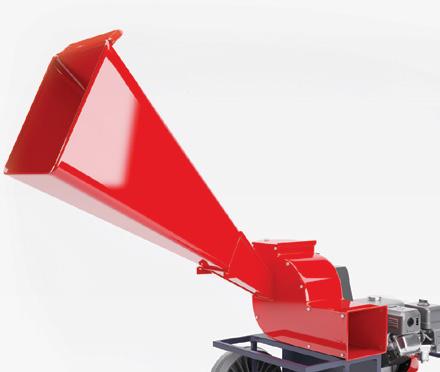



Optimizing the Cultivation Facility

How Hiring an Architect Can Protect Your Investment
By Jade Heiler
Building a cultivation facility can seem like a daunting task, but with the right team of construction industry experts, it can be a much smoother process. As Michigan’s marijuana footprint expands, investing in design services early in the project planning process, even prior to purchasing any property, can prevent costly problems later due to flaws in the facility design. Many cultivators realize this in hindsight.
So, how exactly can an architect help? A building has so many parts and pieces that it’s important to have a dedicated leader to coordinate. The architect is the glue that connects the parts into the whole. Looking at a cultivation facility in its simplest form, the architect coordinates the work of many different disciplines, including but not limited to, surveying, civil engineering, MEPS engineering (mechanical/electrical/plumbing/structural), construction, and equipment and furniture supply. There are many common cultivation facility issues that are preventable with the right guidance. Temperature Control
The high-pressure sodium (HPS) lights that are commonly used in cannabis cultivation generate heat which must be considered in the design of the HVAC system. The cultivator should provide the architect with a desired temperature range, humidity level, and lighting cycle for each room of the facility, and the architect works with the electrical and mechanical engineers to ensure the combined building systems perform for that intended purpose.
Mold Prevention
With a high enough humidity level, the air in a grow room can supply enough moisture to support mold growth without any added moisture sources. Jeff Fusee, senior industrial hygienist at Fishbeck, has experience mitigating mold in operational cannabis facilities that were found to have an improperly designed HVAC system. This can be an especially concerning issue for operators in the Great Lakes State. He warns against trying to retrofit an existing building with the assumption that it will be less expensive than building a new facility. It’s even more important to bring in expert engineers when retrofitting because the existing building systems need to be analyzed for compatibility with the client’s new use.
Property Due Diligence
There are several steps involved in the process of acquiring real estate. Surveyors and civil engineers are helpful in this process. They can analyze a property based on its intended use and prevent a client from purchasing a property that requires expensive improvements. Fishbeck has experience supporting clients looking to purchase real estate. “Our Survey team was able to quickly complete an American Land Title Survey (ALTA) showing the property boundary, easements, right-of-way, and topography of the site to aid in the acquisition of property,” recalls Tim Platz, senior surveyor at Fishbeck.
This is just a small introduction into the world of facility design, but it is the world we live in as architects and engineers. A building is a major investment and you don’t want to waste time and money on a facility that doesn’t perform as intended. Let the experts design it for you while you just “cultivate” the benefits. ❖
The industry-leading entrepreneur shares how he made COOKIES a household name.
By Patricia Miller
Images courtesy of COOKIES In less than a decade, Gilbert “Berner” Milam Jr., has turned his COOKIES brand into a half-a-billion dollar a year enterprise. He isn’t a tech mogul turned cannabis enthusiast. He doesn’t come from a long history of money or connections. Berner is a hard-working rapper and former budtender who loves weed.





Berner started his cannabis career working in dispensaries in the San Francisco Bay Area and quickly became the go-to connection for rappers seeking luxury buds. Berner once hand-delivered a five-foot-tall plant to Wiz Khalifa during a live set. The stunt made an impression. It wasn’t long after that Khalifa signed Berner to his record label, Taylor Gang Records, in 2012.
A year later, he trademarked “COOKIES SF” as a manufacturer of t-shirts and sweatshirts, which allowed him to hang a trademarked sign outside his dispensaries. Since cannabis is federally illegal, and you can’t process a trademark with the United States Patent and Trademark Office for a federally illegal substance, this was the only way to prevent others from using the name and profiting off his work. This clever maneuver was a pivotal step in Berner’s success.
His dominion over one of America’s favorite strains allowed the brand to gain global prestige. It’s available in eight medical and adult-use markets nationwide and began operating internationally last year. Forbes reported his Los Angeles dispensary on Melrose can earn upward of $450,000 in a single day. Berner participated in a fireside chat during the Clio Cannabis Awards ceremony held at the Winter Emerge Virtual Cannabis Conference & Expo, detailing his climb to prominence alongside friends and fellow musicians Run The Jewels. To discover what combination of drive, innovation, and ingenuity is required for such a meteoric rise, we spoke with Berner from his San Francisco recording studio.
Cannabis & Tech Today: You started in cannabis as a budtender. Did you realize early on there was an opportunity in the market for cultivators to start branding their products?
Berner: In the process of falling in love with the bud, I realized a lack of actual branded products. I knew that from the impact I seen firsthand, this shit was going to be around forever, and I wanted to be a part of it. And so I decided to create a brand around it.

C&T Today: Fast forward to when you met, Jigga, your cultivator. How did that relationship start and what led to the partnership?
Berner: Bud’s a very big part of the world we’re in out here in the Bay Area, and I was just buying herb from him and enjoyed what he was growing. I was a huge fan, and I wanted to just let him know I wanted it all the time, and went above and beyond to show him how excited I was about it.
I even made t-shirts before COOKIES, with the first strain he brought me — Cherry Kush. I made t-shirts and put it in my first music video, and showed him like, “Yo, I want to get this shit out to the world. People deserve to taste the shit you’re creating,” and so we just started building from the Cherry Kush to the Cherry Pie to the Cookies.
C&T Today: When you approached Jigga about making a brand out of the strain, did he understand that vision? It was kind of a novel concept, as you said, at the time.
Berner on the legendary COOKIES tour bus.
Berner: To be completely honest, not at first. I think he embraced it. I think when I told him about it, and when he saw it, it was two different things. Again, I used the music career to help boost it.
When I did a video with Chris Brown, Wiz Khalifa, and Big K.R.I.T., it was all over BET and the radio. It was on MTV, the internet, very viral. I decided to wear that “Cookies” sweater. I knew that video was going to get millions of views and I knew it was going to be on TV. I said to myself, “Well, if I really want to launch COOKIES, this is the best way to do it.” When [Jigga] saw it on TV and the internet, he was like, “Okay, I totally get where you’re going with this.”
C&T Today: What goes into the selection process for choosing new strains for your retail operations?
Berner: Two things. I mean, if it’s something that we’re going to cultivate and produce, it goes off my palate, which I feel like has been pretty on point. I’ll just smoke through [phenotypes. If we do a pheno hunt, if we do a breeding project, and let’s say we have 20 different varieties of the same strain, which means we have the same parents, I’ll pick the most flavorful, bestlooking, best-tasting, best high in that variety and select it.
It’s a fun process, and a lot of good energy goes behind the selection of the strains that we have, the naming, and the packaging. It’s a full process to me.
C&T Today: How do you select specific strains to complement your creativity, like when you’re recording in the studio?
Berner: Sometimes when I do my music, I knock out an album in a week, and you have to have different styles of bud to keep that creativity rolling. You can’t just smoke one weed. You’ll smoke something that gets you up and anxious, and then you’ll smoke something that relaxes you because it’s a mellow vibe. Sounds kind of fake, and people that don’t really burn all day wouldn’t understand, but if you burn all day, you understand different herb gives you different feelings. It’s a big part of my creative process from music to design to just all around vibe. It’s pretty important to have a variety on deck.
C&T Today: Something you’ve spoken about before is your interest in bringing long-time growers from the illicit market into the legal space. How are you working toward that?
Berner: Legalization is going to happen everywhere. Just like I’d rather have that grandma — that old-school recipe — than someone doing it fresh off the cookbook... I just feel like if someone’s been doing something for a long time… if it’s not broke, why fix it, right? If someone’s been growing in the black market, they have experience with the plant... I mean it’s not an easy thing to grow good bud. It’s very difficult, and things change all the time, and you have to be very attentive. It’s not something that you can write a SOP to. You can’t just give someone a book and say, “Here you go.” I’d rather have someone that knows what they’re doing in position to represent our brand.
C&T Today: Are there challenges to bringing those OG growers into the space?
Berner: Absolutely. I mean, it’s a different game. The way we make money is a lot different. It’s a long-term play. There’s taxes. I think the biggest problem is how long it takes for the bud to get to the shelf. It discourages the growers. I mean the lead time from someone harvesting and putting it in the consumers’ hands is so
much different than the market they’re used to, but I think that once they jump in with us, they understand what we’re really doing on a global level, and they’re fired up to be a part of it.
Anyone I can bring into the game from the game is a blessing to me because I want to keep this shit as pure as it can be. A lot of opportunists, a lot of money-grubbers are jumping in the business, and they weren’t here risking their freedom. They weren’t getting their bank accounts frozen. They weren’t getting pulled off the planes by the DEA. They weren’t out there on the field, and so I like to see more people from the game in the game.

C&T Today: You’ve had a hand in creating and marketing some super innovative products, from the COOKIES X G Pen Connect Vaporizer to all of your different genetics, and now CAPS. What was the inspiration behind the CAPS product line?
Berner: Alternative plant medicine. It’s super important that we understand how much cannabis has done for people and how much plants, in general, have done for people. I just reversed my diabetes by drinking green juice as a supplemental meal, and just incorporating more veggies, and understanding that plants are here to help, right? Mushrooms, we all enjoy taking them recreationally, but I started learning later on in life that there were so many medical benefits — like every other plant we enjoy, right?
I just think no one focused on combining mushrooms with CBD, CBG, CBN, and even THC, and what that would look like. When we started trying and playing with it, we were pretty impressed.
It took some R&D. Wasn’t the easiest thing to formulate. Shout out to our partner, Tony, at Blue River. He did an incredible job. When we started actually enjoying the finished product, it’s a game-changer for my body, and I love to see young people, especially Black and brown people, on the internet talking about how it’s helping them as well because health products aren’t cool to a lot of people. It’s like, “Let’s just get high.”
CBD, CBG, and CBN in general are supposed to be helping certain things, so it feels good to put a wellness product in people’s hands that, one, actually works. Two, is innovative, that no one else has done. And three, it’s cool as fuck to them, right? You never see people bragging about a wellness product, and so when I see cats that are trying it and actually really working for them in their lives, it’s incredible.
I just think that the thought behind CAPS was really, really innovative, and I got to give my whole team props for that, for sure.
COOKIE’s Co-Founders Jigga and Berner testing products and sharing a laugh between samples.
C&T Today: What does the future look like for the COOKIES empire?
Berner: Man, we just want to keep this shit pure and fun. As long as I’m alive, I want to put my energy into it. No matter how recreational cannabis becomes, I always recognize it’s a medicine. It’s something that unifies people, and so all we’re going to do is keep quality product on the market, and keep expanding in markets that we’re not, and keep our intentions pure.
I want to unite people all around the world. I want to make sure when my time comes, that there’s quality herb on the market. I don’t want a bunch of investment bankers or real estate tycoons, no disrespect, to be controlling the experience of cannabis. People from the business that understand the plant, that understand why we’re doing this should be the ones controlling the experience. That’s all I want to do is help implement my vision all around the world, and hopefully, that shit outlives me.
C&T Today: Does COOKIES have any new projects on the horizon?
Berner: There’s something we’re working on right now for minorities that’s going to be next level. A lot of people are preaching an equity program, which we have done as much as we can with the program put in front of us, and we’re really proud to open up the first Blackowned store in San Francisco.
We’re proud to empower multiple equity brands under the umbrella, multiple minoritybased brands, but what we’re working on is a university in one of our locations where it’s everything from A to Z, from breeding to cultivation to packaging, manufacturing, storefront, lounge, you name it. Everything from the business, A to Z, is in one building.
We want to offer minorities a chance to come and learn the business from us, whether they end up working for us with that knowledge or they end up going off to start their own business. That’s something I’m very passionate about that we have in the works. So just giving the “teaching a man to fish” concept.
It’s one thing to help someone with their equity license, but it’s another thing to teach them the whole game, and we want to teach all minorities the game, whether it be Asian, Native American, Mexican, Black, it doesn’t matter. We want to teach minorities the business and keep them in. I’m pretty excited about the COOKIES University. ❖
Cultivation Made Easy Cultivation Made Easy

B-Real and Kenji Fujishima Launch THC Controls
By Sara Brittany Somerset / Images courtesy of Pedro Garcia
Notoriously unapologetic, lifelong marijuana aficionado, B-Real of Cypress Hill, runs vertically-integrated cannabis company Dr. Greenthumb’s. The hip-hop pioneer continues to expand his canna-business empire with the launch of THC Controls, an industrial automation system that is perfecting indoor cultivation operations. THC Controls fuses together the prized trade secrets and methodology from legendary cultivation sensei Kenji Fujishima, with top-tier technology.
Recently launched, the budding operation provides an all-in-one cultivation set-up with a completely automated environment, and a 24/7 support system, for indoor grows to thrive. This turnkey solution is designed to develop the optimal environment for any indoor cultivation operation to scale, by eliminating human error.
THC Controls’ ‘cultivation made easy’ model focuses on four pillars needed to execute optimal crop yields by providing automated heating, ventilation, and air conditioning (HVAC), lighting, fertigation, and data systems, and even floor plans, which are customizable to each clients’ needs.
Indoor cultivators can now come out of the shadows and set up grows that reflect the multimillion-dollar operations that are indicative of a rapidly expanding industry.
THC Controls founding members, B-Real and Kenji Fujishima combine their knowledge of the cannabis plant with techies George Balasanyan and Mitch Wayte’s experience in setting up commercial, FDA-approved buildings from hospitals, to schools, to military-grade facilities. Fujishima, a master cultivator with over two decades of experience, leads operations at THC Controls.
“Replicating nature in a controlled environment requires a fusion of trade secrets and the top minds in environmental control to produce the crop yields needed to run a successful cannabis brand,” Fujishima said. “Until now, expert cultivators have had to makeshift their own technology out of what was commercially available for other types of businesses and are forced to deal with unreliable vendors. The instruments needed to control everything from making sure the build-out is correct, lights stay on, plants are fed, the temperature and humidity stay at a set point, reminders for routine maintenance, to rapid alerts of any malfunction detected need to work together to be the most effective. By merging these services under one roof, we are ensuring that the equipment and maintenance work in harmony so growers can turn their attention to the plants and ensure a consistent high-grade product.”
Additionally, the data systems installed by THC Controls are meant to be kept local, away from third-party operators such as app stores and cloud databases that can leave your trade secrets vulnerable to hackers or eyes outside your organization.
With no outside investors, THC Controls has complete autonomy to ensure the passion and quality of their work are aligned with Dr. Greenthumb’s brand.
THC Controls automates the growing process, creating more consistent outcomes for facilities of all sizes.

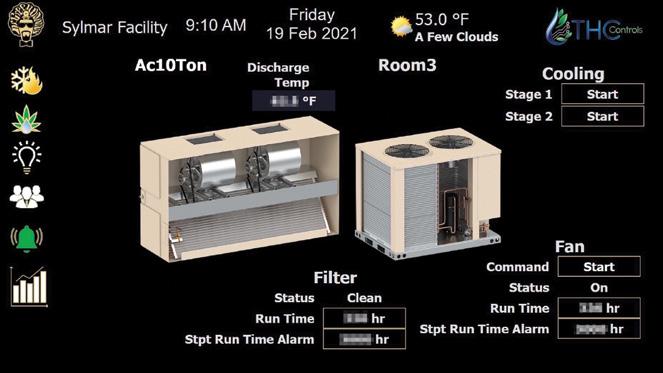
“We have been in this game for quite some time,” said B-Real. “The expertise we have gained in the industry came with so many risks and sacrifices. As the climate is changing, we are finally finding ourselves on the other side and plan to grow Dr. Greenthumb’s as we always envisioned. We are now in a position to benefit others with equal passion for the plant as we continue to grow Dr. Greenthumb’s empire.”
THC Controls offers full custom setups. There is no controller out there that is built one standard way for people in cannabis. If you talk tech with 10 different cultivators, they probably have 10 different ways to describe how they cultivate. “You can’t just sell a boxed controller and say, ‘Here’s your stuff and here is what you gonna do with it,’” said Balasanyan, “because there are sequences and variables.”
“In the clothing industry, for example, there are off the rack options versus tailor-made,” Balasanyan said. “THC Controls are the bespoke regulation system. We offer customizable options and program it accordingly.”
In this exclusive interview, the team behind THC Controls shares how they developed the idea for the brand and what’s next for the rapidly expanding automation company.
Cannabis & Tech Today: B, as a serial entrepreneur, I’m sure you get pitched all day and you’ve launched several successful brands including B-Real TV, Dr. Greenthumb’s, Insane merch, Phunkytips, and now THC Controls. What is it about an idea that gives you that “aha” moment, where you decide the pitch is worth investing in?
B-Real: Yeah. It’s tough listening to the pitches! Sometimes I just don’t. Something that’s enough to grab me has to make sense with who we are, and the culture of our brand. We say no to a lot of people. So, we try to do what makes sense for us. Fortunately, some of the collaboration and things that we’ve done up to this point have worked for us well. We try not to overextend and do too much while we’re growing, as we’re still a very young company in a young industry. So, we’re just trying to not be in a rush to get it wrong. So, we thought THC Controls would be a good investment to not only implement it in our cultivation but also get behind it on a wider scale.
C&T Today: What made you decide to start a custom cultivation installation company? What made you decide to launch THC Controls?
George Balasanyan: We’ve always been in the cannabis space. One of the owners of Dr. Greenthumb’s is related to me, and one day he’s like, “Man, I wish I could just automate this stuff because there are problems occurring.” I told him with my technical background that we could make it happen. So, we tried one room. And now, we’re in multiple facilities. We have about seven million square feet of grow we’re doing this year.
We put about two years’ worth of R&D into our business plan before we opened up to sharing the idea with other growers because we wanted to make sure that we’re able to send them a product that’s going to work, without fail.
The critical difference between THC Controls and a lot of other control systems is our control system is not designed originally for agriculture. Growing tomatoes and orchids are different. Our system is specifically made for cannabis. That’s why we partnered with Dr. Greenthumb’s. We have all of their cultivators in our network.
C&T Today: Kenji, you are a hardcore underground cultivator. What made you decide to finally “go public” so to speak?
Kenji Fujishima: Unfortunately, because of the nature of the business, I was always very standoffish about putting my face out there. Regardless, we’ve been cultivating for a long time. The name has been out there for a minute as a cultivator, so that was hard to avoid. But as
THC Controls proprietary technology allows for complete control over the cultivation process.

far as speaking, even in the world of legal cannabis, I still held onto my old ways. With everything that’s going on now and the confidence of how I feel about what we’re doing and where the cannabis market’s going, I feel like we need to speak out. I’m a cultivator first and foremost and a lot of people have looked to our crew for direction on how to do things. I feel like I really needed to be able to be out there and feel free to talk about the concept of THC Controls now.
C&T Today: Who came up with the initial concept of THC Controls?
B-Real: It was a project that developed a technology for Kenji and me. It was Mitch and George who came up with the initial concept, the THC Controls.
Kenji Fujishima: The brainchild of THC Controls was a model that was used for Dr. Greenthumb’s and we decided to expand that to other companies.
C&T Today: How long has Dr. Greenthumb’s used THC Controls before officially launching it as a separate company?
B-Real: I believe maybe just over a year.
C&T Today: So, this model completely works for you and you’re ready to provide it to additional clients?
B-Real: Yeah. We feel that it’s highly efficient and we’ve seen great results behind it for us.
C&T Today: Who are some of THC Controls’ current clients?
B-Real: I believe Stizzy is another brand that now uses THC Controls. They’re a very sizable brand. I think other companies like Stizzy are being made aware of this whole system. We’ve been in the cultivation business for a long time, and this is what works best for us, so people often look at what we are doing. THC Controls is something that interests a few other brands in terms of recording the data and trying to maintain a level of consistency of product. I would imagine that there’s going to be other companies, small and large, coming to see what THC Controls is about.
Mitch Wayte: We have approximately seven million square feet of grow ops to install in multiple facilities so far this year. ❖
INSIDE THE AUTOMATION

Controllers
THC Controls supplies controllers equipped with 40 points of input/ output (I/O) capability that are expandable in blocks of 10. Each point on these controllers is capable of reading a sensor (temperature, humidity, CO2, etc.) or controlling equipment (enable fans, modulating fan speed, dimming lights, etc.).
Sensors
The sensors that are typical to almost every grow room will be canopy temperature, canopy humidity, VPD, par, and CO2.
Measuring Water Content
As it pertains to measuring the water content, electrical conductivity, and temperature of growing media, THC Controls integrates these into their system via standard industrial protocols (Modbus/SDI-12). The sensors are hard-wired and communicate via a field bus that allows the client to read the sensor more reliably and as close to real-time as possible. They also gather more data than a typical wireless solar or battery-powered sensor.


How “Dispensary Scientist” Dr. Chanda Macias is Empowering More than Healthcare By Patricia Miller Dr. ’ s Orders
When Dr. Chanda Macias was studying breast and prostate cancer, she already knew cannabis could slow the progression of the disease. What she didn’t understand was why a life-saving medication could land patients in prison. This revelation altered the course of her career, taking her across the globe to study natural medicines and advocate for patient access.
In 2015, Macias became the first African American woman in the United States to receive a medical marijuana dispensary license. She founded the National Holistic Healing Center in Washington, D.C., before taking over leadership of Ilera Holistic Healthcare (IHH) in Louisiana as its CEO.
IHH is a medical cannabis cultivation and processing company working in partnership with Southern University (SU). It is one of only two licensed medical cannabis providers in the state. The partnership made history when they created two separate cannabinoid-based product lines, ALAFIA and AYO, establishing SU as the first Historically Black College/ University (HBCU) in the nation to launch both a hemp and cannabis product, respectively.
Macias is also CEO and Chairwoman of the Board of Managers for Women Grow, an organization dedicated to educating women entrepreneurs in the cannabis industry. In this exclusive interview, Macias shares what she’s learned during her journey and why she feels STEM is the future of cannabis.
Cannabis & Tech Today: Your background is filled with so many accolades in science and business. How did your years in medical


Whether acting as CEO of Women Grow, running her many businesses, or taking care of her four children, Dr. Chanda Macias is committed to creating a more equitable and compassionate world.
Images Courtesy of Chanda Macias
research and business innovation lead you to cannabis?
Chanda Macias: I started off as an undergrad studying breast cancer in women. As a biomedical researcher, it was really important for me to study something I was passionate about, and women’s health was always at the forefront. Then when I thought about what was important to me in graduate school, it evolved a little bit more. It was looking at prostate cancer in men and how it metastasized to bone so rapidly, causing a lot of deaths, and having a severe impact in the African American male population.
What was really interesting about both of those situations was that it was known in the literature that medical cannabis definitely had an impact on the symptoms and even slowed the spread of cancer. I just started to dive into it a little bit more, because it was more of a natural medicine and a homeopathic way, instead of some of the more invasive ways to treat cancer. That’s when I learned about the impact the war on drugs had on the African American community and how it created a pipeline to the prison system. So I thought about it a little bit more.
The patients I studied who used cannabis could potentially go to prison for a healthcare need. I was completely shocked. It’s hard for people to see from my lens, as a Ph.D. in biomedical research, that they were using medical cannabis for healthcare reasons and they were in prison for it. So that was my introduction to the realities of the cannabis industry.
When I graduated with my PhD from Howard University (an HBCU), I decided to go into corporate America and switch from cancer research to more infectious diseases. So I worked for ColgatePalmolive Company focused on oral care health, formulating medicines. I have about ten world patents, three US patents for oral care formulations and research. ColgatePalmolive supported my education for an MBA to fast-track me at Rutgers University. world too, one, study supply chain management, which is important, because you need to know how to continuously supply the product or the medicine you’re providing patients with, but also operational analysis. If you’re providing a product, is your business doing the best it can with its standard operating procedures? After I received my MBA, there was a bigger calling for me, I felt, which was to go back into my community at Howard University and study natural medicines. So, I took a position as the director of STEM education at Howard University, and I wrote about $10 million in grants.

I’m really a scientist who knows the business of medicine, if that makes sense. And under one of my grants in particular, it was called the Minority International Research Training [MIRT] program grant, I would take medical students, PhD students, and undergraduate students to different parts of Africa and show them how to conduct biomedical research right there in the field.
I worked with many universities. I had this position for about 10 years. So, my kids speak different languages that I can’t speak. We primarily lived in Ethiopia, but we had sites in Ghana, Mali, as well as Nigeria. Our primary focus there was to focus on natural medicine and the efficacy of these natural medicines. During that time, there was a [request for proposal] for Washington D.C., that if you wanted to be in the medical marijuana industry, whether it was in the retail operation or growing and cultivating, you could apply.
I decided to apply for it and was awarded the medical marijuana license. So, I was the first African American woman in the nation to receive a medical marijuana license, period, at that time.
Photo Todd Willis
C&T Today: Your work, in many ways, has centered around innovation. What are some areas of the cannabis space you think need innovation?
CM: Well, this is Cannabis & Tech, so the technology behind it is really in the product formulations. When I think about my work at Colgate-Palmolive Company, I looked at formulations that helped oral care diseases like inflammation, dry mouth syndrome, or microbial overload. So in the cannabis space, I really took a step back and decided to look at the ailments and conditions that the patients had and to use different formulations of cannabis to treat the ailments and conditions. And not only different formulations, but different strains.
So I was coined “the dispensary scientist,” because I really looked at the genetic

makeup of the different strains and I paired them with a disease or a disease state and helped treat patients that way. And we coined the phrase, “the ailment strain alignment.”
C&T Today: How were you able to determine which strains are helpful for specific ailments?
CM: Just like you have a system for digestion or a system for immunity or the circulatory system, you have the endocannabinoid system. We produce endocannabinoids naturally. But what’s happened over time is we’ve lost the ability to produce those cannabinoids that help us create what I call a homeostasis or a balance. In order to get that balance back, we have to reintroduce cannabinoids to our system and that’s where we see disease and disease states start to mediate or at least stop in their tracks.
For instance, if you have a propensity for a specific type of cancer, we don’t know what that cancer is from. But again, the endocannabinoid system is this one system that regulates all the rest of our systems. So the first thing we try to do is to introduce cannabinoids so the body can gain that balance and start to optimize its other systems to work properly. And so with that, depending on the disease or disease states, I look at the strain, the amount of cannabinoids, as well as the terpene compositions, to help patients with that.
Let’s say I’m treating a patient for pain. What I see first of all, in most of my pain patients, is they also have a certain amount of depression with that. In order for my patients to get the full effect, I need to really treat both [the depression and the pain] at the same time. So I would go to a hybrid for that patient, something that can treat them systemically to deal with their pain, but also something that can lift their spirits up. When you think about the hybrid of a Lemon Skunk, you actually do have a high composition of limonene. Limonene is a terpene that is natural in lemon and cannabis. Limonene is a natural antidepressant.
Now, the terpene composition of limonene will vaporize at 311 degrees. I would set the temperature directly to that setting so they can get the maximum benefit of that product to give them that head lift, to get them out of that depression. And then I would increase the temperature to combustion, so they can feel the effects of the THC throughout the body to reduce the pain levels.
That’s why the patient consultation aspect is so important, because we need to be able to give the patients the benefit they’re looking for so they can have the long-term medical effects they need for improved quality of life.
Image courtesy of Ilera Holistic Healthcare
C&T Today: You’ve been working on one particularly powerful innovation, called HOPE. How did this area of research develop?
So one of my roles, outside of being a multistate operator, is being the CEO and the chairwoman of the board for Women Grow. And with that, I have women day-to-day tell me what their needs are, what their advocacy is. One of those issues was the fact that for mothers who had children with autism, conventional medicine was failing them. They felt like they didn’t have any other resources to help their children and ultimately help their success. And
Image courtesy of Chanda Macias Ilera Holistic Healthcare was foundational in the development of HOPE, a line of THC and CBD products created to help treat the symptoms of autism. Dr. Macias’ work with Women Grow helps her stay attuned to the needs of women and HOPE sprung from those connections.


Image courtesy of Ilera Holistic Healthcare

so, these mothers are the people who actually created the demand for multi-state operations to include autism as a qualifying condition.
The HOPE line was developed in Pennsylvania by autism advocate Erica Daniels of Hope Grows for Autism, and research scientist Dr. Oludare Odumosu, who created the two formulations of HOPE that treat the symptoms of autism. IHH brought HOPE to Louisiana to help that autism patient population, especially those who don’t have a voice, those who are unrepresented and deserve some quality of life. It’s really important to hear our children’s needs, and it was done through the mothers. We heard their cry and we implemented a solution for them.
C&T Today: I’d also like to touch on your time as the director of STEM education for Howard University. Do you foresee a future in which STEM skills are foundational elements for a career in cannabis?
CM: Definitely. STEM stands for science, technology, engineering, and mathematics. When I think about all these different scientific advances that we’re making in education and research, I think definitely that’s the science aspect. It’s growing so much in the STEM industries. But then we talk about technology, which is needed for our systems to integrate and start to speak to each other in our operations. Also, developing more technology to help patients with their treatment plans. Or, even developing more technology to keep track of medicines from seed to cell, there’s always room for growth and improvement. When I think about what that looks like in terms of engineering, I remember a couple of years ago the automatic flower dispenser was made and it measured the weight and put it into a package, whereas historically we had to weigh everything out manually. So when I think about the instrumentation development in this industry, there’s so much room for growth. STEM is the future of cannabis.
C&T Today: What does the future of the cannabis industry look like?
CM: What it looks like to me is the industry is still growing through a passion for healthcare, but it is diverse and inclusive with all populations, from women to African Americans to other minorities having equal access to the industry. With the banking laws changing via the SAFE Banking Act, it’s important we have access to loan programs that can help build our businesses. That’s one of the bigger issues for us actually being able to participate in this industry. I also think about walking into a board room and everyone’s reflected, even those with disabilities. This inclusive and diverse environment can actually bring compassion back to cannabis, which is where it truly started. ❖


More Than Just the Munchies
Can medical marijuana help those suffering from eating disorders?
By Taylor McLamb
Marijuana makes you hungry, that’s a nobrainer and backed by numerous scientific studies. That is why it could be the perfect remedy for those suffering from a health condition that makes food unappetizing.
What about people who can’t eat due to a crippling fear and anxiety associated with food? Eating is normal, right? However, there are a growing number of people who live in a constant battle over the grief and despair of what they do or don’t eat. Cannabis as a potential therapy may help alleviate those food-related fears.
According to the National Eating Disorder Association, it’s estimated that 30 million Americans have struggled with an eating disorder such as anorexia nervosa, bulimia nervosa, binge eating disorder, or orthorexia at some point over their lifetime.
There are many arguments around whether medical marijuana can help those with eating disorders. On paper, it seems obvious — marijuana gives you “the munchies” (a term referring to the plant’s appetite-stimulating qualities), so of course it would help! However, eating disorders have many layers.
The strict rules and behaviors surrounding food can be different from one patient to the next. It may be easy to eat with marijuana, but how do you solve the guilt or depression that soon follows?
A Gateway to Recovery
For years, I was terrified of food. What started as an innocent desire to get healthier turned into a full-blown obsession. Food made me feel like I was out-of-control. It was no longer about weight, it was about obsessively managing the amount of food I allowed myself to eat. I told myself I wasn’t sick, I was disciplined, I was strong — when in reality, I was wasting away. No one deserves to live a life like that.

The first time I tried cannabis in college, it was in the depths of my disorder. My friend offered me a hit from his bong and I felt an immediate, full-body sensation of relief and euphoria. My friends were discussing plans to order pizza and
I surprised myself by replying that I could eat.
Typically, the anxiety and shame after eating a meal would cause me to hyperventilate. With cannabis, I was at peace. Cannabis was like a warm hug, not completely eliminating, but softening the edges of my anxiety. I was able to eat the pizza and enjoy it. Why didn’t I find this plant sooner?
Of course, cannabis works differently for everyone. For me, it was a gateway into my recovery. I also had the support of my therapist, dietician, and doctor to help me work through the deep-rooted psychological issues of why I feared food.
A Healthier Option
Cannabis & Tech Today spoke with Dr. Joseph Rosado, the first physician to recommend medical marijuana to a terminally-ill pediatric patient in the state of Florida. When recommending medical marijuana, Rosado stressed the importance of first addressing the


Dr. Joseph Rosado and Tamara Pryor, PhD.

Enthusiastic attendees at the annual NEDA Walk in New York, united by their passion in bringing awareness to eating disorders and raising funds to provide life-saving resources to those who need it.

underlying issues that fuel the disorder.
“By addressing what I believe is the root cause, which is anxiety and depression, the eating disorder isn’t going into the bulimia and anorexia side of things,” said Rosado. “The medical marijuana is going to support [patients] with that, but also stimulate their appetite to help them eat.”
Only one class of medication has been approved to treat eating disorders, the SSRI Fluoxetine (Prozac) for bulimia nervosa and binge eating disorder. Rosado said that some medications can have unwanted side effects and supplementing with medical marijuana could be a healthier option.
Rosado noted medical marijuana has been helpful managing psychiatric conditions such as depression, anxiety, and bipolar disorder, which often are associated with eating disorders. However, he also stressed that the use of medical cannabis has to go hand in hand with counseling and psychotherapy to work through the underlying issues of the disease.
Researching a Remedy
Dr. Tamara Pryor, PHD and Fellow of Academy for Eating Disorders, has researched and studied eating disorders for 30 years.
Now, Pryor stands as the executive clinical director and director of clinical research at EDCare in Denver. Pryor noted that while there is still a long way to go in terms of the clinical treatment and pharmacological treatment of eating disorders, two evidence-based treatments, cognitive behavioral therapy (CBT) and interpersonal therapy have proven effective. The combination of an SSRI and CBT is more effective than either by itself. Medical marijuana as an alternative route, however, requires further study.
“I don’t believe anyone can say cannabis is going to cure eating disorders,” said Pryor. “However, due to lack of research, we cannot say whether it could be helpful as an adjunctive treatment to the proven therapies.”
While cannabinoids have been known to stimulate appetite, Pryor shared a double-blind, controlled study of adults with anorexia nervosa who were also in a behavior management program and showed no benefit from the application of 9-tetrahydrocannabinol. The medication caused drowsiness and sleep disturbances in anorexia nervosa patients.
In contrast, a 2014 randomized, controlled trial in which dronabinol, an isomer of tetrahydrocannabinol (THC), was administered to women with severe relapsing anorexia nervosa found that the medication was associated with weight gain, though only a small amount.
“Anecdotally, patients report various benefits from different strains of cannabis, such as improved sleep, decreased anxiety, or less fear related to eating,” said Pryor. “Cannabinoids profoundly affect eating behavior, but how they relate to diagnosed eating disorders and how agonists or antagonists may be used to facilitate recovery requires further study.”
A Journey Worth Taking
While marijuana allowed me to enjoy food with ease, my recovery would have been nearly impossible if it weren’t for the help of my treatment team. I can now enjoy food without the help of cannabis, and I’ve come to a place of acceptance and love for myself and my body.
If you or a loved one is suffering from an eating disorder, there is no shame in asking for help and getting treatment. If considering medical marijuana, it’s important to recognize there is still a lot of research to be done. With that in mind, recovery from an eating disorder, while a difficult journey to take, is one absolutely worth fighting for. ❖
Often Imitated, Never Duplicated
How One Man’s Closet Clone Became One of America’s Most Beloved Cultivars
By Patricia Miller / Images courtesy of Canna Provisions
On a warm summer night in 1991, Greg Krzanowski was prepping for a Grateful Dead concert in Deer Creek, Indiana. While perusing offerings from his fellow concert-goers, he stumbled onto a bag of herb that would become a foundational strain in the world of cannabis.
Krzanowski had just found what would later be called Chemdog, a cultivar now known from coast to coast for its diesel-like aroma and potent THC content. It’s the granddaddy of strains like Sour Diesel, OG Kush, and numerous other hybrids. Krzanowski, aka “Chem,” liked the herb so much, he decided to reach out to the people who supplied it and ask for a bit more.
His contacts mailed him a few ounces of flower with thirteen errant seeds, and Chem made the most of them. From those seeds grew a thirty-year legacy and a thirty-year-old Chemdog clone. Both of which are now foundational elements of Canna Provisions, a Massachusetts cultivation facility, and dispensary brand. Chem joined Canna Provisions as their director of cultivation and his first legally-grown flower hit shelves in March of this year.
This is especially poignant for Krzanowski, as he was sentenced to three years probation and a cash forfeiture of $300,000 for possession of marijuana in 2013. The experience nearly turned him off growing forever, but he found his way back to the soil and joined Cannabis & Tech Today from his Canna Provisions post in Western Massachusetts.
In this exclusive interview, Chem details his passion for growing and shares a sneak peek into what he’s bringing to market next. For the full interview with Chem and to learn more about

Greg “Chem” Krzanowski has been growing “Chemdog” for the illicit market for more than thirty years. He’s shown here harvesting a plant from his first legal crop.



Chem relishes working on his first legal grow as director of cultivation for Canna Provisions. Company CEO and Co-Founder Meg Sanders teamed up with COO and Co-Founder Erik Williams to create their unique brand. They asked Chemdog to bring his years of experience to their Massachusetts-based facilities.


Canna Provisions, visit www.cannatechtoday. com/Chemdog.
Cannabis & Tech Today: When did you first become interested in growing cannabis?
Greg Krzanowski: I grew my first plant when I was 16. I was in my brother’s apartment and I’m like, “I’m going to grow a plant in your closet, just let me do it.” I grew for a little bit, but then all his roommates started clipping the buds off the plants.
So when I moved out of my [parent’s] house when I was 18, that’s when I really started. I found the Chemdog [strain] when I was 18. That was the first true plant that I grew, that I took really good care of and went full force. I started growing when I was 18 and didn’t stop until I was 39, when I got in trouble. So I was growing half of my life at that point.
C&T Today: When you tried Chemdog initially, did you recognize how unique it was?
GK: As soon as I saw the bag and I smelled it, I knew it was something very special. Then once I smoked it, I was like, “Wow, this is some of the best tasting pot I’ve ever smoked.” It was just beautiful. I knew it was something special. Thank God I had exchanged phone numbers with the people I got the pot from and linked back up with them about a month later. That’s when I got an ounce of the Chemdog and it actually had thirteen seeds in it.
I was so thrilled there were actually seeds from that bag, because I was like, “Wow, I think I just hit the lottery.” Little did I know…
I don’t know why I wanted to preserve it so much, but I just knew it was something special and I’ve always had a passion for growing. So I just went with it and thank God I did. Since then I’ve had the same clone for… it’ll be thirty years this August.
C&T Today: As legal cannabis rolled out in different states, were you surprised to see so many Chemdog-derived strains hitting the shelves?
GK: It is everywhere. I’m humbled by it. It just shows it’s a very well-liked strain out there that spawned off many other strains and many other hybrids. That’s why it’s on all the shelves — it’s very powerful and it’s good medicine.
I would say probably 85% of the stuff out there [called Chemdog] isn’t really what it’s labeled. They’re just throwing the label on it to sell it. A lot of the strains, I can take one smell and know this isn’t it. They just use the name.
I don’t want to mention names, but there are a few well-known celebrity brands out there right now claiming to sell Chemdog, and it’s just not Chemdog.
C&T Today: Does cultivating the plant in a legal setting allow you to spend more time on R&D or look closer at Chem genetics than you’ve been able to before?
GK: Oh, for sure. We have a very high-tech facility. Everything is just there at our disposal, so there’s plenty of time to do research. You have the space and the tools to do it. So we’re going to perfect it.
There’s definitely a difference growing in the legal market versus the illicit market. You’re more open about things. You can get things accomplished without looking over your shoulder. You can do a lot more research and development. To have a high-tech facility makes a big difference.
C&T Today: Are you working on any new strains to debut with Canna Provisions?
GK: Oh yeah, we have a lot. Too many to list. But our first crop, we’re going to be doing a lot of the flavors. I’ll just name off a few, like Wedding Cake, MotorBreath 15, Las Vegas Purple Kush, Chemdog 91, Chemdog 4, Chemdog D, Mac One, Chem’s Lex, Chem’s Sister, Zuki, Skittles, Urkel, Corey Haimes, Guard Dog… just to name a few. Then we started just a ton of other seeds that are just going to blow people’s minds. We’ll wait to announce those, but that’s a little preview of what we’re going to bring to the market. ❖


4 1 2


5 3
1 Stratos Slow Burn Joints – We may rush a lot of things in life, but we should never rush a joint. Stratos Slow Burn Joints were crafted to burn four times slower than the average joint. Created with hand-rolled flower, the oil infused in the plant is matched to the same or similar strain to create a balanced high. Available in strains Wedding Cake, Bazookies 10, OG Lime Killer, and more. Sold individually. $14 2 Terp Timer by Octave – No more burning your throat when taking a dab! Get the temperature right for your concentrate every time with this sleek desktop sensor unit. Set your desired temperature, relax, and the unit will remind you when it’s ready. Battery lasts 2-3 months per charge with a 10 year warranty. Customize your unit by choosing a color: Glossy Black, Silver Alloy, Limited Edition Candy Paint, or Limited Edition Marble. $149 3 USDA Certified Organic Full Spectrum
Hemp Extract by Aspen
Green – With the hype around CBD, it’s important to know what you’re ingesting. All of Aspen Green’s awardwinning products are made with USDA Certified Organic Full Spectrum hemp extract, free from formaldehyde, phthalates, parabens, suflates, and toxins. Thirdparty testing ensures this family-owned brand offers only top quality ingredients. Available in 3 strengths: 1000mg, 2000mg, and 3000mg and 3 flavors: original, mint, and citrus.
$55-$145.
4 K20 by The Packaging Company – If pre-rolls are your business, freshness and integrity are paramount to your success. With the K20, you can rest easy knowing every single pre-roll tube is child-resistant, airtight, and ASTM compliant. Their lightweight design keeps shipping costs low and complete customization options ensure your brand stands out from the competition.
Call for pricing or visit www.sativapower.com.
5 CompactDry Plates
by Hardy Diagnostics
– Lab-testing equipment is continually evolving to keep up with the strict safety regulations of the expanding cannabis industry. These plates are perfectly designed for cannabis labs. Avoid distorted morphology and keep colonies intact with their spacious design. Plus, Hardy Diagnostics offers media types for all major pathogens. Choose organism-specific or total count tests, now available in easy-to-label cassettes. Pricing varies, to
learn more visit https:// hardydiagnostics.com/ cannabis/.


1 Customized Plastic
Packaging from Alpha
Packaging – Let your brand match your ideals with 100% recycled or plant-based packaging solutions. Even traditional PET or HDPE options are now fully recyclable. Whatever your needs, Alpha Packaging has you covered. Choose from an existing color palette or create your own. With these packaging solutions, the only limitation is your imagination. Call for pricing or to learn
more, visit https://www. alphap.com.
2 CAPS by COOKIES –Experience all the benefits of medicinal mushrooms with awardwinning cannabis brand COOKIES’ revolutionary threein-one capsule product line. The capsules combine a therapeutic blend of nonintoxicating organic mushrooms, cannabinoids, and terpenes to either boost energy (Clarity) or prepare you for a good night’s rest (Bed Head). The capsules are gluten-free and vegan. Both products come in a 30-count of capsules: $55. 3 ePac Flexible
Packaging – Carbonneutral HP printers plus sustainable inks and films all work together to underscore ePac Flexible Packaging’s dedication to creating a circular economy. Whether it’s their lay flat and standing pouches or just rollstock, ePac has custom-printed solutions for businesses of all sizes. Customize your perfect package and have it to your door in 15 days or less. Free
quotes available at www. epacflexibles.com/quoterequest.
4 Precision Batching
Equipment by Green
Vault Systems – Isn’t it time to upgrade your systems with an automated packaging solution? Weigh, batch, jar, and cap with a Green Vault system customized for your unique packaging needs. With modular add-ons, your equipment can expand with the growth of your brand. The jarring and capping line revolutionizes production speeds for just $130,400. Complete Precision Batcher: $275,000 5 MPAK Spray
Dispenser by Packaging Concepts Associate Holdings –
Cannabis products are evolving every day and so too are the variety of packaging options available to manufacturers. Give your clients a spritz they’ll remember with the MPAK Spray Dispenser. Now available in both childresistant and non-child-resistant varieties, this little spray bottle is as safe as it is sleek. Check out their new twist, tab, and button lock systems. Call for
pricing.
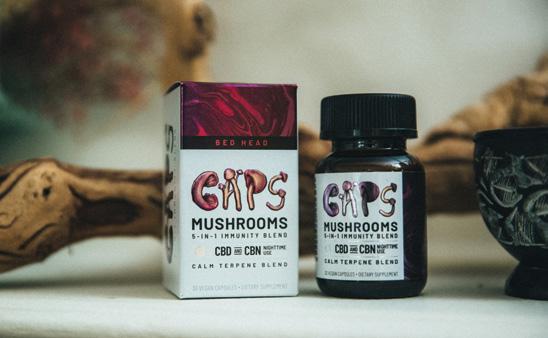

2

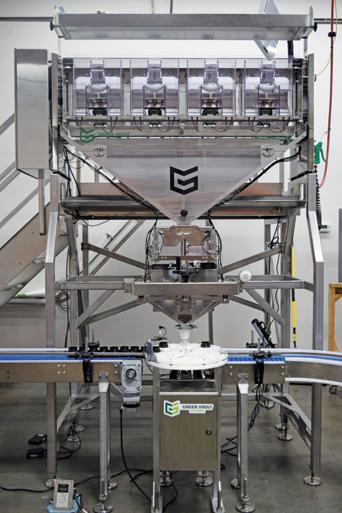
4 5



2 3

4 5

1 Eossi Beauty Facial
Glow Oil #8 – It’s always important to dedicate some time for self care. Made with replenishing oils, such as grapeseed, vitamin E, rosehip, and 1,000 mg of broadspectrum CBD oil, Face Glow Oil #8 will make you feel hydrated and refreshed. Each full dropper of the 50 ml bottle contains 20 mg of highquality CBD. Facial Glow Oil is completely cruelty free and vegan. $50. 2 Facility Design
Services by Surna –
Surna’s deep understanding of every aspect of cultivation facility design – not just the HVACD and systems in which they specialize – allows them to lend support from predesign budgeting through facility commissioning, and every stop in between. Lean on their team of experienced engineers to compare and contrast solutions, and budgets, to help you make the perfect choice for your facility.
Visit www.surna.com to review your options.
3 TTT3000 by Tom’s
Tumbler – You worked hard to cultivate gorgeous buds. Preserve those trichomes, crystals, and each nug’s delicate structure with the hand-trimmed quality of the TTT3000. Trim 50+ pounds of dry or 100+ pounds of wet flower an hour in Tom’s largest tumbler. Ships with MeshNets, ½ and ¼ inch, and a kief screen. Their innovative bladeless technology is ideal for craft cultivation or industrial applications. Get yours for just
$4,699.
4 Mercenary All-
Natural Insecticide by Cultured Biologix –
Mercenary’s all-natural oils, natural emulsifiers, and surfactants create a powerful barrier against pests. Containing no alcohols, it acts as a non-toxic respiratory inhibitor and octopamine antagonist to inhibit breathing, movement, feeding, and reproduction of adult and juvenile insects without impacting the plant's health. Apply once a week for prevention or every day for heavy infestations. Available in 4 oz, 16 oz, ½ gallon, or gallon sizes. $25-500. 5 TWAX by The Clear –Sure, you’ve smoked, but have you twaxed? TWAX by The Clear is an innovative way to reach a more potent high. These individual prerolls are made with 1.25 grams of premium flower infused with 200 mg of The Clear’s award-winning distillate. Made with allnatural flavoring and free of dyes and contaminants, the distillate comes in a variety of flavors: Lobster Butter, Grapevine, Blueberry, and Lemon Haze. $20
Events
At Cannabis & Tech Today, we miss seeing friends and colleagues at in-person events. Fortunately, we’ve been connecting in virtual reality through the Emerge Virtual Cannabis Conference & Expo, taking place quarterly. Plus, recurring Re-Emerge gatherings offer attendees a chance to revisit their favorite sessions and network in a familiar and immersive setting. While virtual smoke sessions and speeches are still a safe solution for getting together, in-person events are starting to make a comeback. We’re highlighting some that we’re most excited about below. Dates are subject to change. Check event websites for updates.
MAY

International Cannabis Business Conference Global Investment Forum / Austin, TX / 6-7 Cannabis World Congress & Business Expo / New York, NY / 27-29
JUNE
Native American Cannabis & Hemp Conference / Temecula, CA / 14-15 USA CBD Expo / Atlanta, GA / 16-18 Cannabis Science Conference East / Baltimore, MD / 28-30
iStockphoto.com/Weedezign
Coming Next Issue
WELCOME TO THE PARTY, ILLINOIS
The plague year wasn’t all bad for the great state of Illinois. It became the 11th state to legalize adult-use and we’re highlighting all the innovations taking place in the new market. We’ll speak with the thought leaders entering the space, the local governments about their challenges and victories, and discover why this area is primed for growth in 2021.
THE COMPLEX WORLD OF CONCENTRATES
Let’s take a deeper look at concentrates. Is there more to this expanding market than just shake turned into oil? Yes! And we’re going to dive into what makes it great, who’s revolutionizing the space, and all the amazing technology going into its creation and its enjoyment.
COVERING YOUR COMPLIANCE
Ensuring every aspect of your business is in compliance with laws and regulations is perhaps the most important thing an entrepreneur can do in the world of cannabis. But, it isn’t fun and it isn’t easy. Let’s break down some of the complexities and make it easier to digest in this issue’s compliance spotlight.
CUSTOMIZING YOUR CANNABIS
We’re starting to understand more nuances of the cannabis plant. What cannabinoids are interacting to create specific effects? How do flavor profiles, terpenes, and unique physiology help geneticists develop new, exciting strains? We’ll answer these questions and more with an exploration of terpenes, ingestion methods, and the science behind the buds.

If Cannabis Strain Names Were Correct and Not Utterly Bizarre
By Adrienne Airhart
Your mom smokes weed. It’s not even a joke anymore; it’s a fact. Your mom goes into dispensaries and Gen Z’s TikTok-hop around offering well-informed advice on how to use CBD for arthritis, and which strain to use to make her husband (your dad) want to have sex with her (you’re welcome). Do you know what is a joke? The cannabis strain names offered to this sweet woman who shoved your enormous head from her precious, powerful temple.
The thing is, friend, the strain isn’t always indicative of how the cannabis will make you feel. Sometimes a strain is named after people — like Jack Herer, the legend — or places, like Kush in the Himalayas. Or how they smell (Lemon OG, Cheese, etc.), but rarely are they named for how they’ll make you feel and what they’ll make you do. And they should be.


iStockphoto.com/KarenMower iStockphoto.com/StockPlanets

Alaskan Thunderfuck
What, is your mom going to feel like she’s trapped in an avalanche unable to call for help, or that Thor’s mighty hammer will strike her down upon inhalation? Come on. This strain should be called, “Ooh, Feel How Soft The Cat Is Right Now, Watch Out Here It Comes Again, Grab The Cheez-Its!” as it is a creative, chill sativa with a creeper tendency and a penchant for inciting munchies. Creeper strains come on like one of Saturn’s moons, slowly retrograding your life, adding a desperate need for a snack and a blankie. You’ve been warned. Green Crack
Why do we do this? Sure, this is a super sativa that helps with focus and creativity similar to the effects of a stimulant, but it will not encourage you to start your own business, get mad at your friends for not investing in said business, or break up your marriage. It will help you, “Get Shit Done and Try To Have Sex With Your Platonic Friend Morgan” (Morgan, I know you still watch my IG stories!). Its got aphrodisiac effects, drives focus, and uplifts your mood tremendously. Save on Xanax and switch to cannabis. Just… try it as a microdose before you jump in. White Nightmare
I choose to feel threatened by this one, gentle reader. Blue Dream remains one of the most popular strains, and its crossbred progeny like White Nightmare offers cannasseurs a taste of that creative spark with just a touch of anxiety. This strain should be called, “Get the DIY Stuff Out and Await Existential Crisis” because it will wreak havoc on your sense of corporeal being. You’ll do that face where it’s like a smile but with scared eyes. And you’ll beg for the sweet release of sleep. Use it for its productivity and to create the next great TikTok about how we all have ADHD (I hate you) and then do some serious self-care. We love that journey for you.
Don’t be afraid to ask your budtender about the effects a strain will have on your body. They’ll tell you. We’re still the boss of these kids! Don’t resent that they get to sell weed without losing their parents’ respect. ❖ Adrienne is a stand-up comedian and writer and has been a cannabis professional for nearly a decade. You can find her everywhere at @craydrienne.
